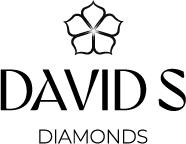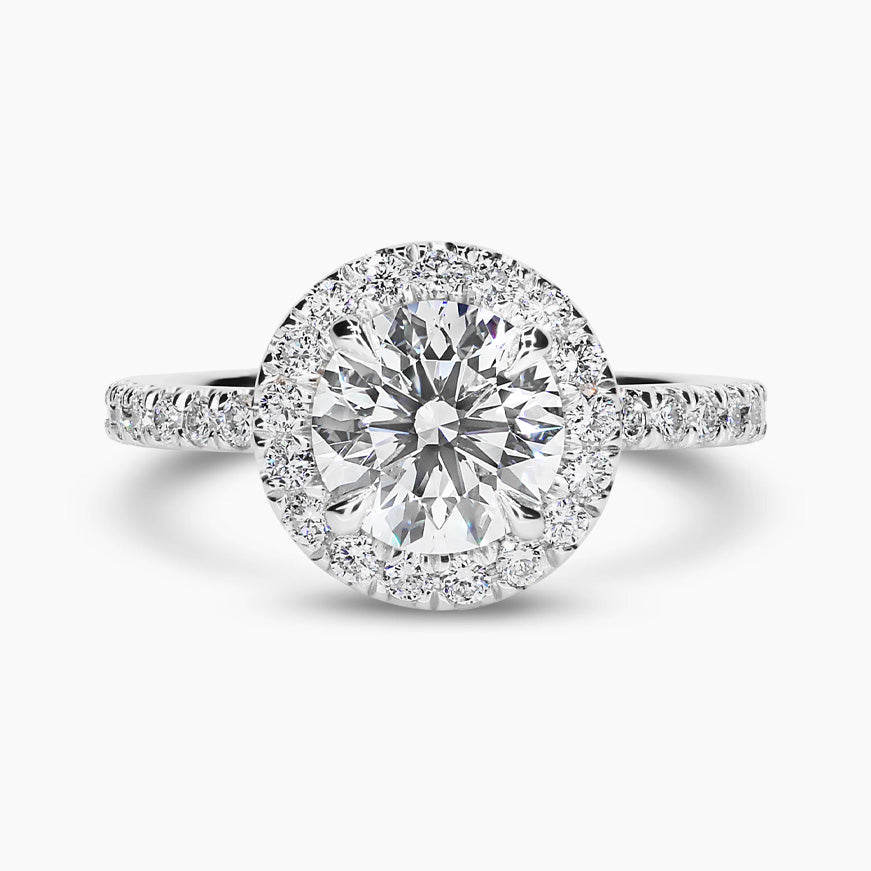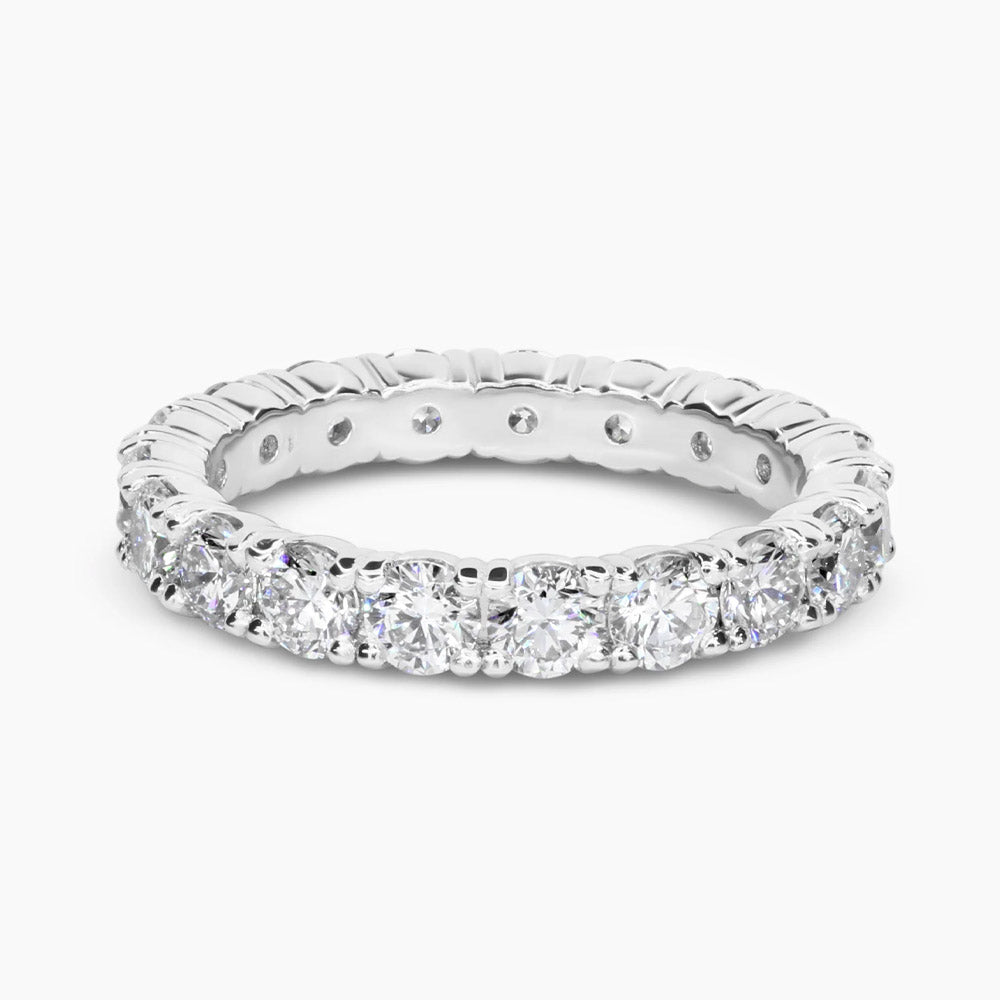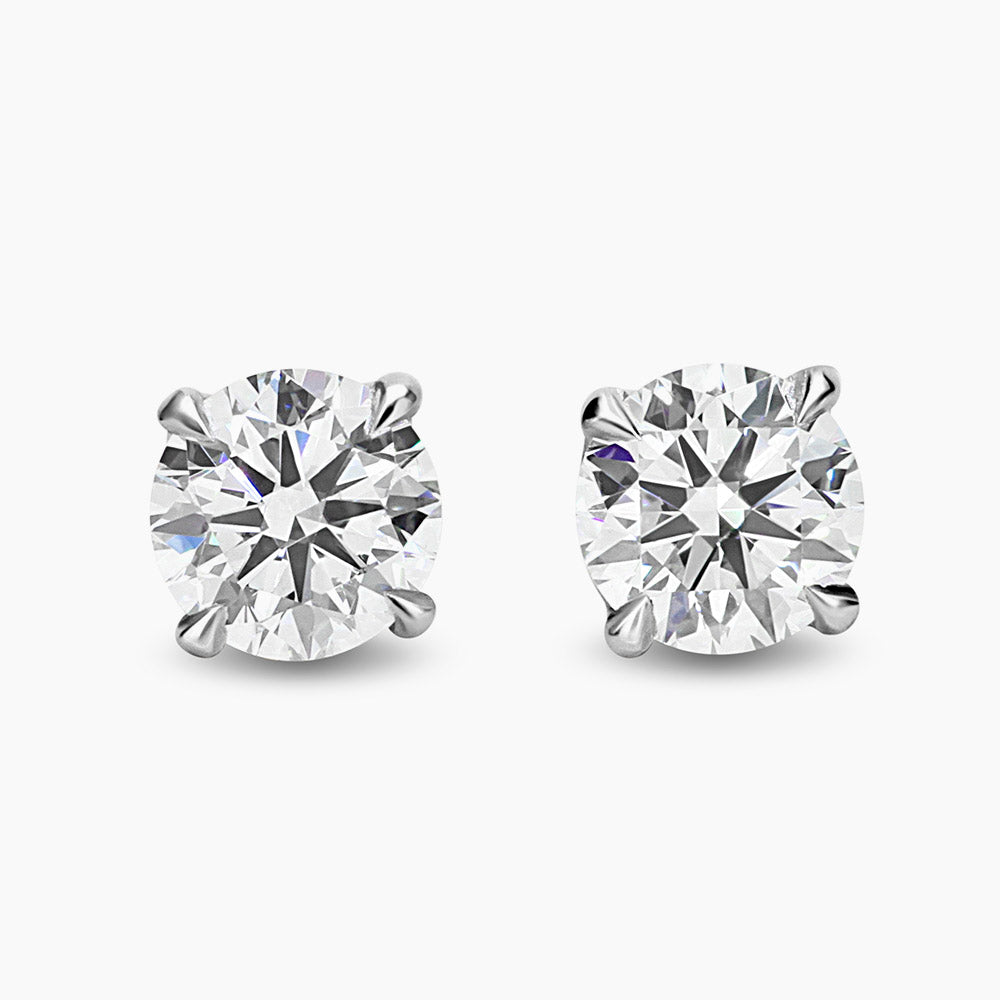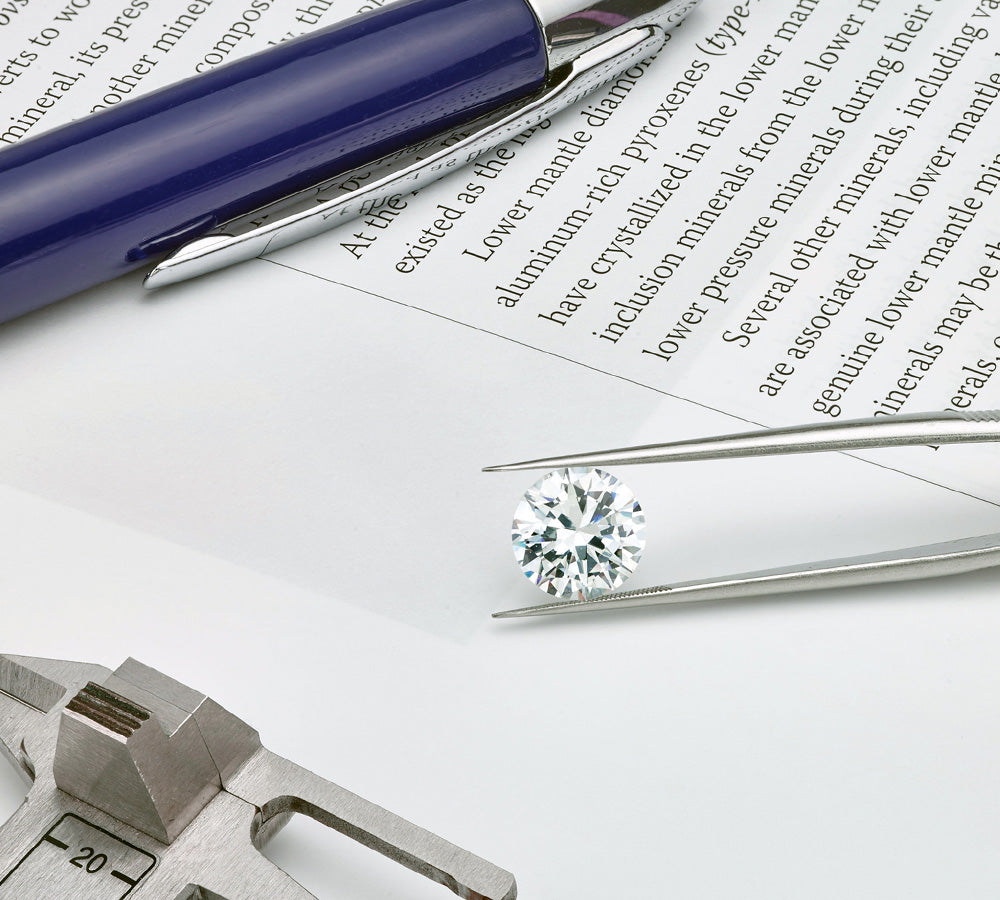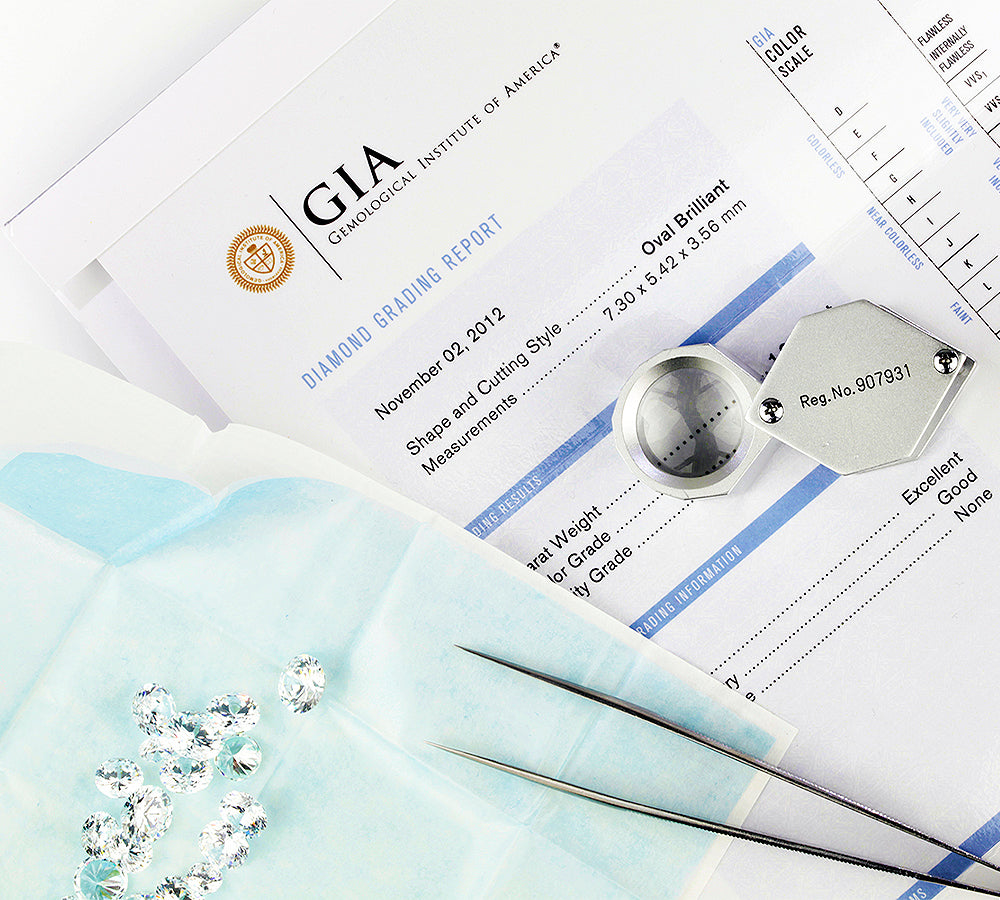The term ideal is a very strong adjective that usually describes something having reached a state of perfection or flawlessness. In our view, in order for a diamond to be described as an Ideal Cut, that diamond must exhibit the highest standards in proportion, external symmetry, external polish, optical reflective symmetry, light flow architecture, harmonization, aesthetics and light performance.This combination would undoubtedly produce the greatest degree of luster, brilliance, fire, scintillation, and aesthetics. In the world of diamonds, that means maximum beauty. Given our stringent definition of what an ideal round brilliant cut is, the traditional 58 facet round brilliant cut diamond does not meet this standard due to the inherent limitations of its faceting arrangement, even when cut perfectly. Nevertheless, in the pursuit of the traditional round brilliant cut, one should always seek out the most optimal proportions and finish in order to get the best appearance for this cut model.
Today, very sophisticated high tech equipment is available on the market to analyze the proportions of polished diamonds. Sarin Technologies, by effective use of 3D-Metrology technology, has created a machine that accurately takes measurements of a diamond in a three dimensional way. Sarin Technologies supplies all major Gemological Laboratories in the world including GIA with their Diamond Proportion Analyzer that can measure all critical external measurements of the diamond in a matter of seconds. The GIA, the most reliable diamond grading institution, provides only the measurements of the Depth and Table percentages. Therefore, one can easily obtain a Sarin Report from the seller to supplement the GIA report for more detailed proportion information.
Factors of the Cut — Ideal Finish is Important
An optimally proportioned diamond needs to have excellent finish as well. In diamond finishing, the focus is on external symmetry and polish. In order to attain excellent symmetry, the diamond is only allowed symmetry irregularities that are extremely difficult to locate under 10X magnification or none at all.
Typical symmetry problems a diamond can have are:
1. Tables or culets off center
2. Girdle outline out of round
3. Misshapen facets
4. Unequal sizes of opposing facets
5. Table not octagonal
6. Wavy girdles
7. Misaligned facets
8. Pavilion and crown main facet out of alignment
9. Facets failing to point properly.
Reflective Symmetry is very important
Excellent Optical Reflective symmetry describes the proper alignment of facets in a precise three-dimensional fashion in relationship to each other that is capable of producing a light reflection pattern that is symmetrical, coherent, and efficient. This results in the highest quality internal flow of light to the crown that can be achieved for that particular cut model. This metric focuses on the micro faceting detail of the diamond. This excellent optical symmetry is easily identified by a Hearts and Arrow pattern for a traditional round brilliant cut when viewing the diamond through an Optical Symmetry Viewer.
Hearts and Arrows Pattern
An Optical Symmetry Viewer such as the Hearts & Arrows scope allows the observer to see the pattern. After placing the round diamond table down, one should be able to see an eight hearts pattern near the circumference of the round diamond. For each heart pattern to appear optically symmetrical, six separate individual facets must be optically aligned, four facets from the pavilion and two facets from the crown. For each arrow pattern to appear optically symmetrical, one main pavilion facet and one crown kite facet must be optically aligned.
There are different levels of Optical Reflectivity Symmetry in a round brilliant cut diamond. This depends on how consistently the diamond’s individual facets are cut and properly aligned. Pay detailed attention to the symmetry of every heart and every arrow if you are pursuing an optimal cut.
The Requirements for achieving optimal light performance in the traditional round brilliant cut diamond are excellent proportions, finish, and reflective symmetry. A diamond must have all these characteristics in order to be considered optimal.
Rarity of the Ideal Cut
True Ideal Cuts are Rare
Not all optimal proportioned stones that exhibit a hearts and arrow pattern have excellent optical symmetry. Not all stones with excellent optical symmetry with H&A patterns possess ideal brilliance because they might not have optimal proportions. It would be necessary to have optimal proportions that are leakage proof with excellent external symmetry, excellent polish, and optical symmetry in order for a diamond to be classified as a truly optimal cut diamond with the utmost brilliance for that cut model. Having only one of these criteria is not enough. To be truly considered ideal the diamond must possess the greatest light performance and aesthetics when compared to all other round brilliant cut models.
Precisions Cutting is Rare
Diamonds of this exceptional beauty are extremely rare because not only do you need diamond manufacturers that are willing to lose the excess weight from the rough diamond, but also necessary are master cutters with extraordinary artistic talent that can handcraft the precise faceting arrangements onto the raw diamonds. Precision cutting at this level is very difficult to achieve and only a handful of cutters in the world possess such skills. One can cut diamonds for years, yet may never be able to develop the skills that are necessary to cut an optimal cut diamond. Like surgeons, not all are the same.

